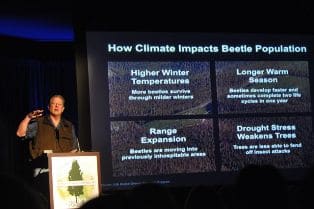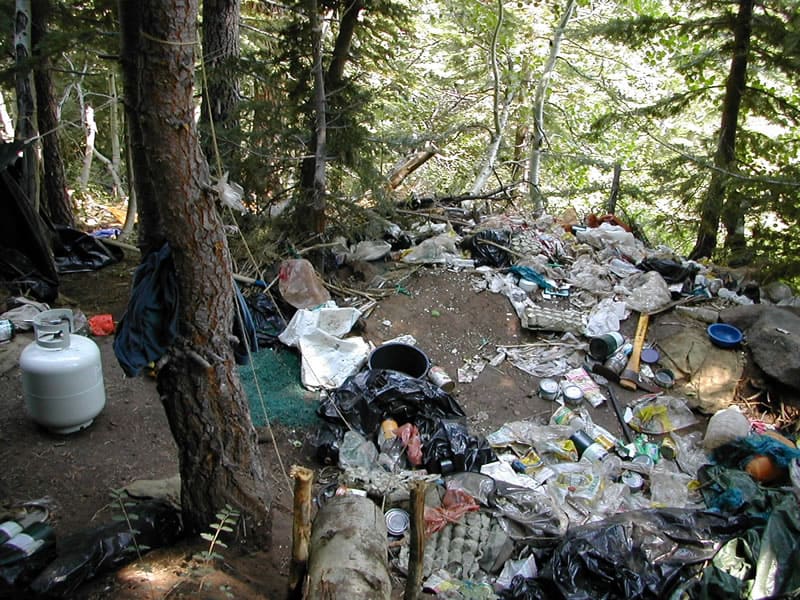 On February 18, Al Gore visited Aspen, Colorado for a symposium put on by For the Forest. Some of my colleagues attended and said that the presentations were excellent. Fortunately for those of us who couldn’t make it, the whole enchilada is posted here.
On February 18, Al Gore visited Aspen, Colorado for a symposium put on by For the Forest. Some of my colleagues attended and said that the presentations were excellent. Fortunately for those of us who couldn’t make it, the whole enchilada is posted here.
My colleagues especially recommended the Canadian and international perspectives as particularly interesting, as we are more aware of the local pest-related impacts. Those would be the Kurz and Allen presentations, and Linda Joyce is always worth hearing, so if you only have so much time, I would recommend those.
Here are a couple of quotes from a Denver Post news story here.
“The climate is changing,” said Forest Service ecologist Linda Joyce, speaking at “Forests at Risk: Climate Change & the Future of the American West.”
“Temperatures are warming and will likely continue to warm,” she said.
That will change the look of forests forever, but exactly what they will look like remains to be seen, she said.Aspen, the iconic trees of the West, will probably vanish from mountainsides where they once thrived, Joyce said. Pine trees will retreat to cooler climes, and animals that depend on them will follow.
That leaves land managers trying to grapple with “the eventual loss of the plants and animals we know,” she said.
And
“It’s a challenge that I’ve never seen,” said Rick Cables, Rocky Mountain regional forester for the Forest Service. “. . . This context, the context of our times, with climate change and what we’re seeing on the landscape, is a game-changer.”
Government agencies are used to working slowly and juggling a variety of interests, from environmentalists to industry.
Those groups may have to learn to work together, Cables said, if land managers are to respond quickly. Tools such as fire and logging may be necessary, he said, even if they’re unpopular.”
FWIW, that’s the way I frame “climate change and forests” as well, that the shared challenge of climate change is calling for us to work together differently and, dare I say, better than we have in the past.
Finally, here’s a High Country News Goat Blog piece by Sarah Gilman, with a different take on the conference.
But the conversation was lacking in one glaring way — especially given the event’s location within striking distance of the mini-mall-sized houses (which loomed unignorably over my left shoulder through the giant picture windows of the Doerr-Hosier Center) peppering Red Mountain, the private jet-dominated airport which accounts for a sizeable chunk of Aspen’s greenhouse gas emissions, the four ski resorts that draw people here from all over the world.
No one pointed the finger back at us — at our insatiable appetite for energy, be it “dirty” or “clean;” at our use and over-use of resources — land, water, timber — regardless of our political affiliations or whether we’re global-warming believers. Energy efficiency and conservation got barely a nod. There was no mention of living smaller, closer to home. After the auditorium had cleared and everyone dispersed to a fancy reception with live music and free food, a colleague snarkily dubbed the day’s proceedings “Drive For the Forest.”
My next post will be relating the worldview described at this conference to the concepts in the proposed planning rule.


